Keeping the bathroom shiny all the time can be troublesome for many households. You may still notice grey stuff in the toilet despite frequent cleaning and scrubbing.
While toilets are supposed to be the cleanest and most hygienic places in your home, they’re the most accessible place to attract ugly mold. Although it may seem unnatural and unappealing, grey stains in the toilet are often the result of natural causes. Of course, poor hygiene could also be a reason.
The greywater problem of dealing with grey stains in the toilet is not new. It’s a problem that has plagued many homeowners, renters, and toilet owners for years.
The good news is that there is a working solution. Anyway, what is that grey stuff in a toilet bowl, and how can you remove it?
What Is Grey Stuff In Toilet Bowl?
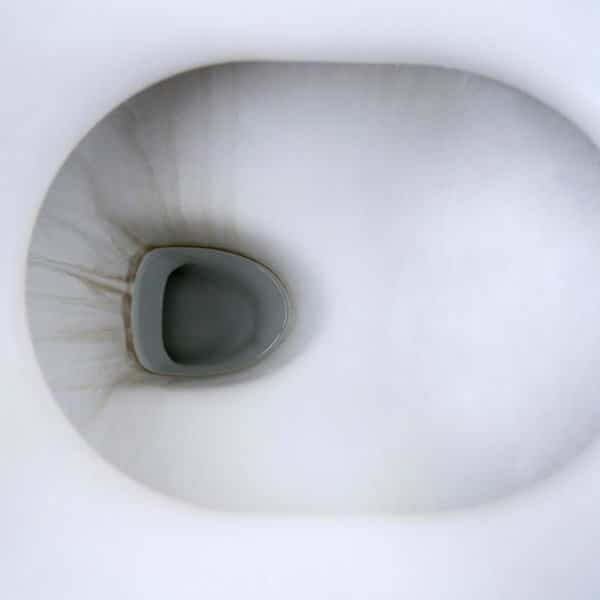
The gray stuff that ruins the shine of the bathroom is most likely toilet mold.
If you especially notice black spots after rinsing and have ruled out the water problem yourself and don’t think it’s just hard water, mold may be growing in and around your water supply lines.
Your pipes may be rusting or leaking, creating an ideal breeding ground for mold. So mold can get in with the water in the pipes leading to the toilet.
Like all molds, toilet mold is a fungus that thrives in warm, humid, dark environments. It doesn’t have to be a specific type of mold. Various types of mold can grow in your toilet.
Molds come in a variety of colors. Black toilet mold is the most common color that forms “rings” in toilets. This ring can also be green or grey. Orange or pink slimy mold can form around the bathroom where the toilet is wet. The black mold is what causes grey stains in your toilet bowl. [1]
What Causes Grey Stuff In Toilet Bowl Besides Mold?
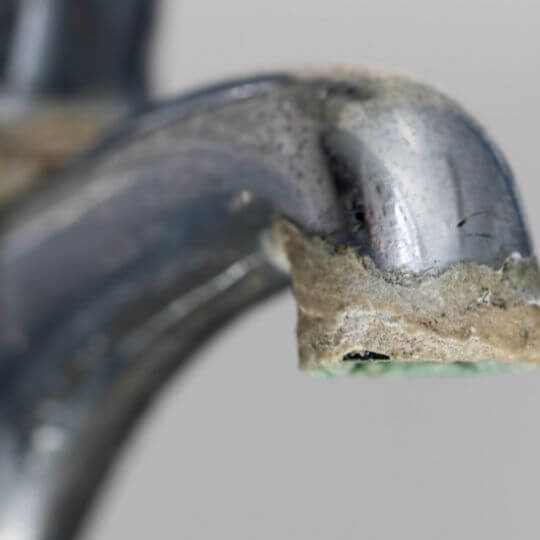
There are many common causes of gray stains in toilets besides black mold. Let’s discuss and find the source of your toilet’s grey stains.
Phosphate In Water Supply
The first reason is that the grey deposits in the toilet are residues from the water pressure.
Orthophosphates are added to water supplies in many places. Orthophosphate is excellent for preventing water heater or plumbing corrosion, but it can leave a hard-to-remove gray deposit in the toilet.
Hard Water Deposits
The next cause could be hard water limescale in your toilet. The grey deposits in the bathroom are actually calcium carbonate residues in the hard limestone layer.
City Works On Water Pipes
The following reason is that the city has been working on your outdoor water line, and debris may have entered your water system. Dirty water might appear grey in your toilet bowl, leaving unpleasant stains.
Growth Of Sulfur Bacteria
Another reason is that the toilet is infrequently used, allowing sulfur bacteria to grow in the tank. When the toilet is flushed, the residue inside the bathroom is usually gray.
Is Mold In The Toilet Dangerous?
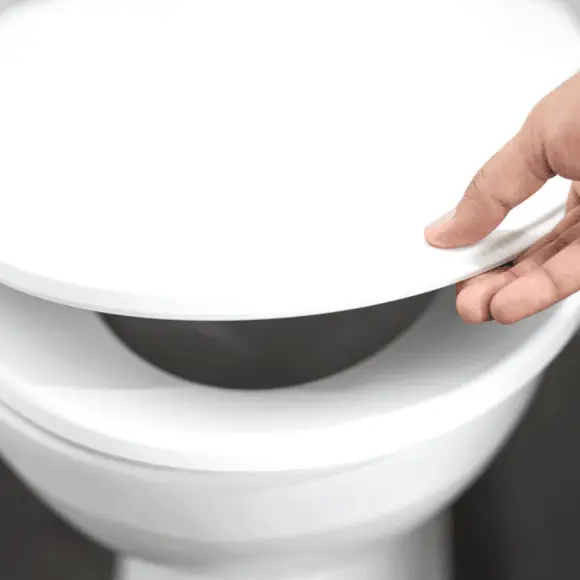
Mold develops within 24 to 48 hours and remains unsightly and harmless during this time. However, once it starts to form visual material, it can be hazardous to your health.
Mold in the toilet is harmless if you are healthy. However, mold exposure can lead to health problems such as shortness of breath if you are allergic or sensitive to mold. Exposure can also cause infections of the eyes, lungs, skin, and other organs. Infants, young children, the elderly, and people with weakened or compromised immune systems are susceptible to mold complications.
Generally, toilets’ black and green (grey) mold species are not dangerous if you identify and control them faster with a professional mold remediation service. But if you or your family are allergic to mold, it can lead to various health problems. [2]
How To Get Rid Of Grey Stains In Toilet?
Similar to brown stains, these grey stains are formed by phosphate residue or dirt. You could try to rise it with vinegar and water. If that doesn’t work, contact your local water company.
If the gray deposits in the toilet are caused by bacterial growth/molds, you can do two things.
Start by cleaning the inside and outside of the tank, then flush the toilet with a few gallons of bleach (be careful not to mix it in the bowl as it will produce toxic fumes).
Second, buy a bacterial treat at your local hardware store if that doesn’t work or is too harsh for you.
Both products can remove bacteria and keep your toilet gleaming.
If the gray stains in your toilet are due to calcium carbonate scale or sulfur bacteria growth, you can buy a commercial solvent-based drain cleaner or limescale remover at your local hardware store.
However, please follow the product instructions carefully as some may take up to 48 hours to see results.
How To Prevent Grey Stains In Toilet Bowl?
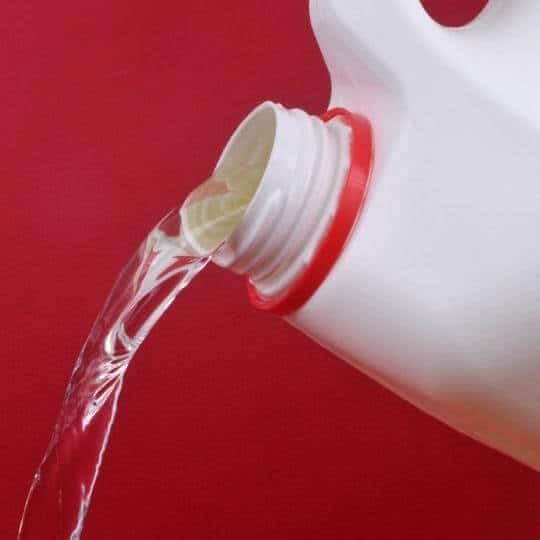
Gray stains in toilets are annoying, but there are a few things you can do to prevent the stain from forming in the first place. A good toilet bowl cleaner can work wonders when it comes to preventing stains.
At least once a week (or more often, especially if you have small children), spray the cleaner around the bowl from the rim and leave it on for at least 20 minutes. Use a toilet brush to scrub the inside of the toilet, including under the edge, then flush the toilet.
You can also prevent stains by sprinkling baking soda in the toilet, swirling it, and letting it sit overnight. Flushing rarely used toilets once a day can also help prevent stains from settling.
Cleaning your bathroom a few minutes a week will prevent mineral buildup and bacterial growth, so you don’t have to worry about getting dirty. Regular maintenance is essential, so try to make it a habit.
How To Remove Grey Stains In The Toilet With Vinegar And Baking Soda

You probably already know that vinegar and baking soda are great solutions for removing stains at home, aside from their baking use. Surprisingly, this mixture also fights grey stains in toilets.
To prepare the vinegar and baking soda mixture, simply pour 2 cups of white vinegar down the toilet, wait about 30 minutes, and then give it a good scrub. While the bowl is still wet, sprinkle a few tablespoons of baking soda into the bowl. Use a cloth or toilet brush to massage the vinegar and baking soda into the soiled area. This should remove most stains.
Alternatively, you can scrub with a pumice stone using a soda and vinegar mixture. If you don’t happen to have vinegar at home, lemon juice will work too. [3]
How To Remove Grey Stains In The Toilet With Coca-Cola
Yes, it sounds weird, but Coca-Cola seems to have an excellent cleaning effect for those toilets with grey stains, too, at least in some cases.
If you can be sure no one’s going to the toilet for at least four hours, just pour a whole can of Coca-Cola around the rim so that every millimeter is covered. Leave it on every minute of those four hours.
Wipe off with a toilet brush, then rinse, and you’ll have a clean glacier toilet. However, note that Coca-Cola isn’t the most efficient solution, and the operation might not succeed enough.
These funny DIY methods have been a milestone discovery for cleaning the toilets. Just don’t forget to use rubber gloves no matter which way you choose. [4]
Best Chemical Solutions To Remove Grey Stains From The Toilet Bowl
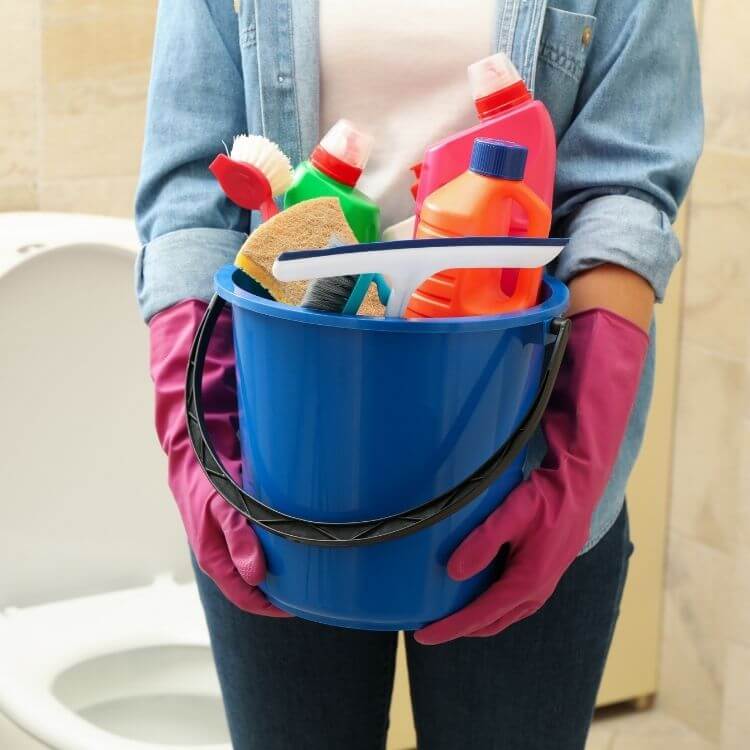
Natural cleaners are generally not as strong as chemical cleaners and tend to require more elbow grease to remove stains. So if you are looking for a faster and more efficient solution, chemical cleaners/chemical bleaches are a must.
Dry cleaners use synthetic ingredients such as hydrochloric and chlorine bleach.
Hydrochloric acid is corrosive and helps remove stubborn stains. Chlorine solution is a bleach and disinfectant that helps prevent the spread of bacteria and viruses.
Toilet bowl cleaners come in various forms, including tablets, powders, liquids, gels, and complete cleaning systems.
Tablet Solution
Tablet cleaners are concentrated cleaners that drop into the water in the toilet tank and rely on added chemicals to reduce bowl stains. With each rinse, bleach is released, preventing dirt and stubborn stains from sticking to the bowl.
Powder Solution
Powder cleaners are an inexpensive and effective option. They can be made from various ingredients but usually contain an acid to dissolve stains and a disinfectant to kill bacteria. Use a cloth, sponge, or brush to rub the powder onto the surface to clean.
Liquid Solution
Liquid cleaners are the most common toilet bowl cleaners and typically use chemical solutions in concentrates and ready-to-use sprays. Before putting it in a spray bottle, the concentrate must be diluted with water. Spray the cleaner directly on the toilet bowl and rim to remove stains, then use a toilet brush to remove it.
Clorox Cleaning Solution
Black mold can be a tricky business, growing in hidden places and causing many problems. If you’ve got a mold problem in your bathroom, you need a reliable, heavy-duty cleaner to take care of it.
Many cleaners on the market claim to be able to handle mold, but not all of them are created equal. When you’re looking for a cleaner to tackle your toilet mold, you need something strong enough to kill the mold and prevent it from coming back. One product that’s up to the task is Clorox cleaning solution.
This powerful cleaner uses a unique formula to quickly and effectively kill mold, mildew, and bacteria. It also contains a corrosion inhibitor to protect your bathroom surfaces from damage.
Clorox’s cleaning solution is one of the best on the market and comes with a cleaning sponge.
Preloaded with Clorox Cleaner, these sponges deep clean and remove stains while killing germs and leaving your toilet feeling like new.
Hexagonal sponge heads reach and drain hard-to-reach areas under the bowl rim for deeper, faster cleaning. So if you’re struggling with those unsightly grey stains in your toilet, consider Clorox as your affordable and effective cleaning solution.
To use, simply apply the cleaner to the affected area and scrub away the mold. Ensure to dry the area thoroughly afterward to prevent the mold from returning. With regular use, you can keep your bathroom mold-free and looking great.
Related: How To Remove Rust From Bottom Of Toilet Bowl
Costs For Removing Grey Stains From The Toilet Bowl
If you’ve tried all these methods and the ring is still there, it may be time to call a professional. A plumber or cleaning company can remove the ring quickly and efficiently.
There are many factors to consider when determining the cost of removing grey stains in toilets. The first is the size of the problem. If the staining is localized to one area, the price will be lower than if the staining is widespread. The second factor is the type of stain.
Some stains are more difficult to remove than others. The third factor is the type of toilet. Standard toilets are much easier to clean than those with intricate designs. The fourth factor is the level of expertise of the cleaning company.
Companies with more experience will typically charge more than those with less experience. The cost of removing grey stains in toilets can vary widely depending on the abovementioned factors.
Read Also: What Causes Toilet Bowl Ring

Michael Davis is a heating & plumbing expert who currently works as independent contractor in SC. He also writes for Plumbertip.
For almost 10 years he worked on various plumbing tasks across South Carolina.



